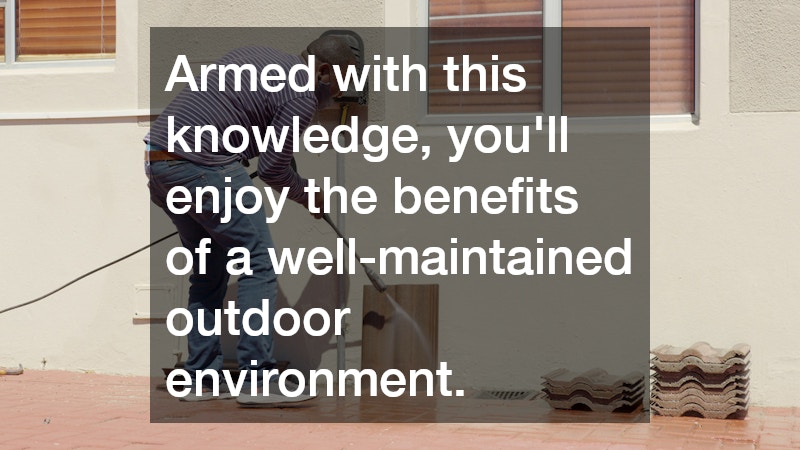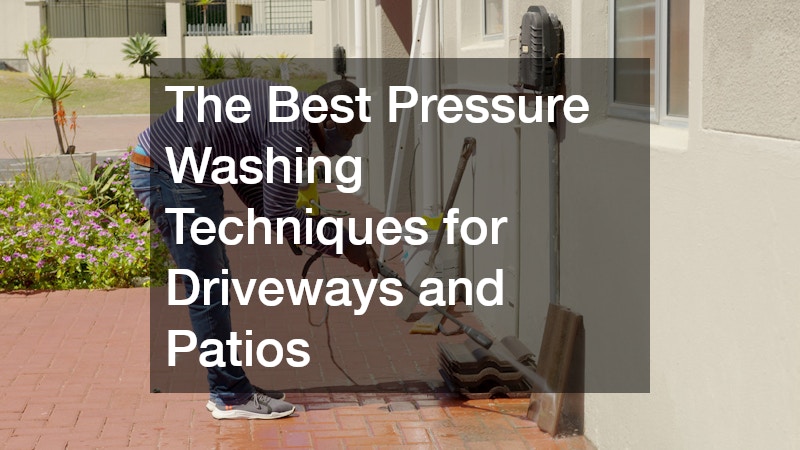In this article, we will explore the most effective techniques for pressure washing driveways and patios, ensuring your outdoor spaces are pristine and well-maintained. A clean driveway or patio not only enhances the aesthetic appeal of your home but also prolongs the lifespan of these surfaces.
1. How Often Should You Pressure Wash Driveways and Patios?
A. Factors Influencing Frequency
The frequency of pressure washing your driveways and patios largely depends on several factors such as weather conditions, environmental influences, and the amount of foot traffic the areas receive. For instance, homes in areas with frequent rain may require more regular cleaning due to increased moss and mildew growth.
Furthermore, if your driveway or patio is shaded by trees, it might accumulate dirt and organic debris faster than open areas exposed to sunlight. High-traffic areas with regular vehicle or foot activity may also benefit from more frequent washings to prevent buildup and staining.
Understanding these factors aids in determining an effective maintenance schedule, ensuring your outdoor spaces remain inviting and in peak condition year-round. Regular observation of surface condition will further inform your cleaning intervals.
B. Recommended Cleaning Schedules
For most residential properties, a thorough pressure wash every six months is sufficient to keep driveways and patios in top shape. Spring and fall are optimal times for cleaning, aligning with seasonal shifts that contribute to surface grime.
In regions with harsher climates or in homes with more significant usage, quarterly cleanings may be more advantageous. Regular cleaning schedules not only preserve the appearance but also protect the surfaces from potential damage caused by mold and mildew.
Adhering to these schedules not only maintains cleanliness but also extends the lifespan of your hardscaping, ensuring that your outdoor areas continue to make a positive impression. Opting for a more proactive maintenance approach helps prevent minor issues from becoming major repairs.
2. What Equipment and Detergents Work Best?
A. Choosing the Right Pressure Washer
When selecting a pressure washer, the primary decision revolves around choosing between electric and gas models. Electric pressure washers are user-friendly, suitable for small to medium surfaces due to their moderate PSI (pounds per square inch).
Gas-powered models, on the other hand, offer higher PSI, making them ideal for larger areas and tougher stains such as oil and rust. However, they require more maintenance and are typically more expensive.
The choice between electric and gas should consider both the size of the area to be cleaned and the nature of the cleaning tasks. Budget and personal preference in handling equipment are also crucial factors.
B. Best Cleaning Solutions for Different Surfaces
The type of detergent used significantly impacts the cleaning efficiency and the protection of the surface being cleaned. For general maintenance, mild detergents specifically designed for concrete or stone surfaces work best.
For areas with persistent stains or organic growth, consider using specialized cleaners with ingredients formulated to break down grease or kill mold and algae. Always follow the manufacturer’s instructions for optimal results and safety.
Proper application methods include pre-soaking the surface and using a dedicated detergent tank or attachment on the pressure washer. This ensures even distribution and effective breakdown of dirt and grime.
3. What are the Key Techniques to Avoid Damage?
A. Proper Pressure Settings
Setting the correct pressure is critical in preventing surface damage during pressure washing. Generally, driveways and patios made from concrete or brick can handle higher PSI levels, typically between 1,500 to 3,000 PSI.
Softer materials, such as natural stone or older concrete, require lower pressure settings to prevent chipping or etching. It’s advisable to test a small, inconspicuous area before proceeding with the entire surface.
Adjusting the pressure according to surface material ensures effective cleaning without compromising structural integrity. This consideration is key to preserving the quality and appearance of your outdoor surfaces.
B. Preventative Measures and Aftercare
To avoid damage, always use the pressure washer at a consistent angle and maintain a safe distance from the surface. This prevents gouging and allows for a more uniform cleaning effect.
After washing, applying a sealant can further protect the surface by repelling water and preventing future stains. Regular sweeping and keeping gutters clear of debris also contribute to extending the cleanliness of the area.
Post-washing care supports the longevity of the cleaning results and reinforces the structural health of your driveways and patios. Implementing these strategies helps maintain a neat and well-maintained outdoor environment.
By understanding the appropriate techniques and considerations for pressure washing driveways and patios, homeowners can effectively maintain these important outdoor spaces. Regular cleanings, proper equipment, and mindful techniques ensure long-lasting cleanliness and durability.
From selecting the right equipment to applying effective preventative measures and aftercare, these practices collectively contribute to a pristine, welcoming home exterior. Armed with this knowledge, you’ll enjoy the benefits of a well-maintained outdoor environment.

